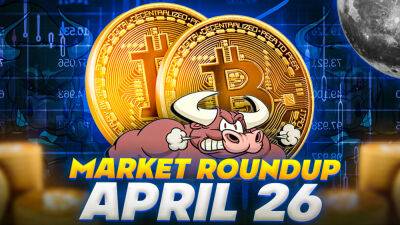Bitcoin touches $30K as BTC bulls well-positioned for weekly $3.2 billion options expiry
Bitcoin (BTC) price broke above $29,800 on April 26, totaling 9.6% gains in 24 hours, reaching as high as $30,024 on Bitstamp. Some commentators argue that the 50% drop in First Republic Bank (FRB) shares on April 25 has been the catalyst for Bitcoin’s rally.
Despite the positive shift, its price remains 22.5% down in twelve months, which explains why bulls are far from optimistic.
The FRB debacle comes after the bank’s earnings report, which showed that clients’ deposits shrank by 40.8% during the quarter as customers pulled out their money. Notably, the bank received a $30 billion cash injection in March, but the quarterly outflows topped $100 billion.
On the other hand, the U.S. Federal Reserve signaled that it would hike interest rates above 5%. By increasing the cost of capital, the central bank might succeed in taming inflation, but the unintended consequence is a weaker economy and a bearish market structure for risk assets, including Bitcoin.
Some analysts pin the $31,000 resistance rejection to the harsh cryptocurrency regulatory environment, especially in the U.S.— which became more evident after Coinbase filed a court action to force the Securities and Exchange Commission (SEC) to clarify industries’ rules.
More specifically, the exchange asked the SEC to provide clarification about how it goes about classifying tokens as securities.
Still, Bitcoin’s gains of 27% between March 26 and April 26 is exactly what bulls needed to succeed in April’s $3.2 billion monthly options expiry.
The open interest for the April 28 options expiry is $3.2 billion, but the actual figure will be lower since bears were expecting sub-$28,000 price levels. These traders were caught by surprise as Bitcoin gained 9.6% between April 25 and
Read more on cointelegraph.com










